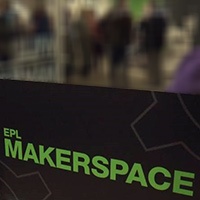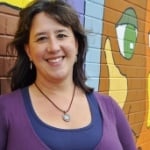Remember the old adage that cautions, "Just because you have a shiny new hammer, doesn't mean that everything you see is a nail?"

Renowned community builder John McKnight uses the analogy of hammers and saws to highlight an important distinction between the "tool" of community and the "tool" of service delivery organizations in the building of strong communities. He emphasizes that, "both tools are important but they each have specific uses. You don't use a hammer to cut wood or a saw to hammer nails. The trick is discernment."
As someone curious about the unique leadership role communities play in advancing positive change, I find John's clarity between service delivery organizations and communities illuminating. Too often, in my experience, they are referred to synonymously when, in fact, they are actually quite different from each another. Whereas communities tend to be informal and horizontal in their structure, non-profit organizations tend to be quite formal and hierarchical. Whereas communities rely upon the experience and knowledge of residents that is freely shared, non-profits rely on the specialized knowledge of paid professionals and experts. When speaking of communities it is also important to recognize that a community is much more than a group of individuals who happen to live in close proximity to one another. Strong communities are those where the skills and talents of residents are known, recognized and connected.
The distinction between communities and organizations becomes particularly important as organizations, municipalities and communities discover the power of collaboration and its ability to generate promising new solutions to our most complex issues by working differently together. Not only are these multi-sector solutions often more effective, they also result in stronger communities and more resilient neighbourhoods. The ability to work differently together begins by appreciating the distinctiveness of each of the sectors, and co-creating a new way of working that honours and combines each sector's strengths and differences. When this is done right, innovative new solutions are co-created which generate powerful, and often long-lasting results.
One inspiring example of new possibility that emerge when communities and organizations "work well together" are makerspaces. Makerspaces are described as, "places where people come together to design and build projects." Makerspaces typically provide access to materials, tools and technologies freely to the public to encourage hands-on exploration, participatory learning and mentoring as seasoned experts work along-side curious learners eager to experiment in learning a new skill. Often makerspaces are housed within libraries or other public spaces.
One of the very first makerspaces in Canada opened in the Edmonton Public Library (EPL) in 2014. Its creation helped contribute to the library's recognition as the 2014 Library of the Year. Billed as a place "to learn, create collaborate and discover with free access to the latest technology and equipment," the EPL Makerspace offers free public access to 3D printers, high performance computers, design software and two soundbooths where budding musicians have free access to an array of musical instruments as well as state-of-the-art recording and mixing equipment.
The EPL Makerspace is also recognized as contributing to making the Edmonton Public Library the second most-visited place in the entire city – welcoming 14 million in-branch and online visits annually across its 20 branch locations.
Discovering and effectively harnessing the unique strengths of organizations, municipalities and citizens is a sure way to create dynamic neighbourhoods and strong communities. Cultivating the necessary awareness and skill to convene across sectors is an ability that needs to be recognized and fostered. Meet John McKnight and other inspiring thoughtleaders next month in Edmonton, Alberta for Resilient Neighbourhoods – When People Care where we will dive deeper into the ways communities can play a leadership role in advancing positive change. We hope you will join us.
Learn More:
- Join John McKnight in Edmonton, AB, June 7-9 2016 for Resilient Neighbourhoods – When People Care
- Visit the EPL Makerspace webpage at the Edmonton Public Library
- Learn more and join the Neighbourhood Strategy Leaders' Community of Practice atwww.deepeningcommunity.ca





